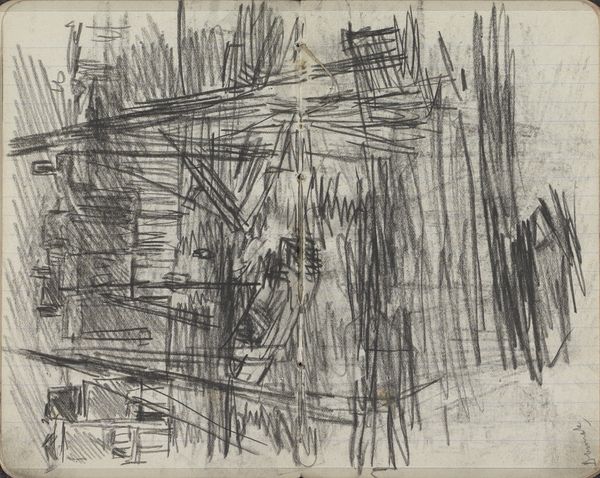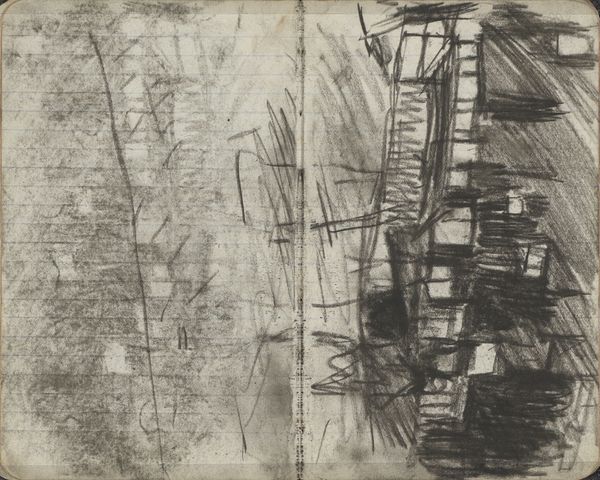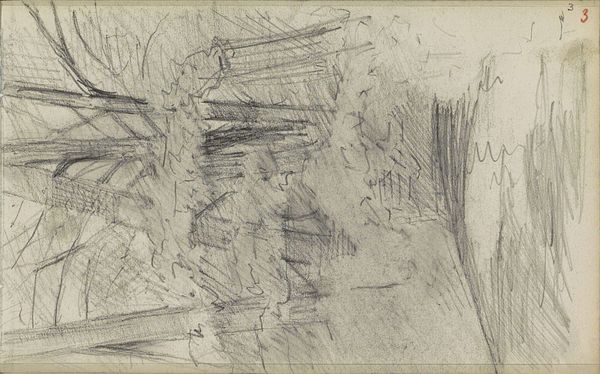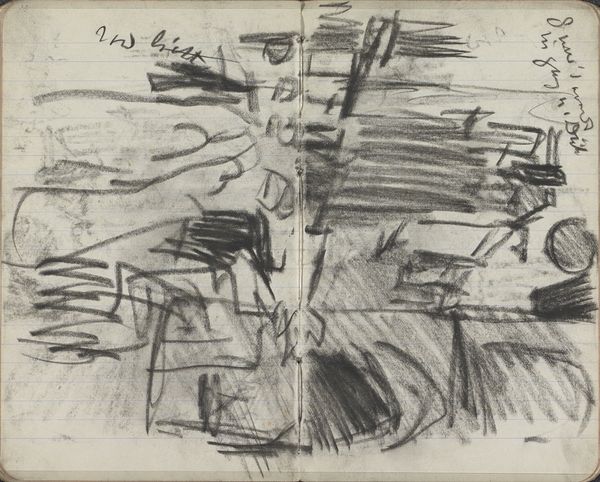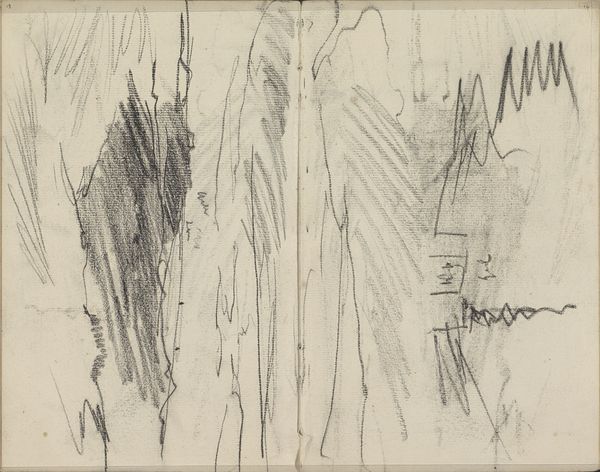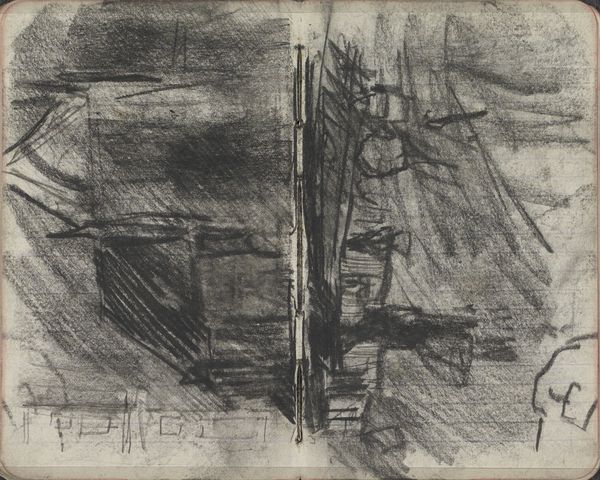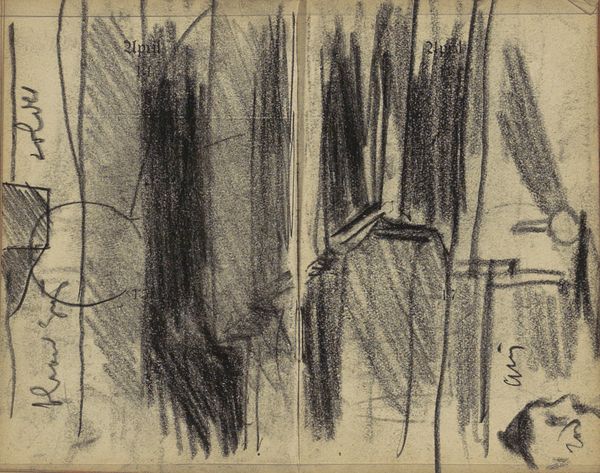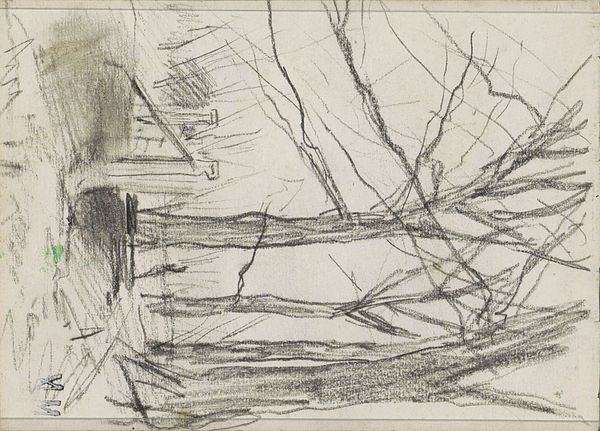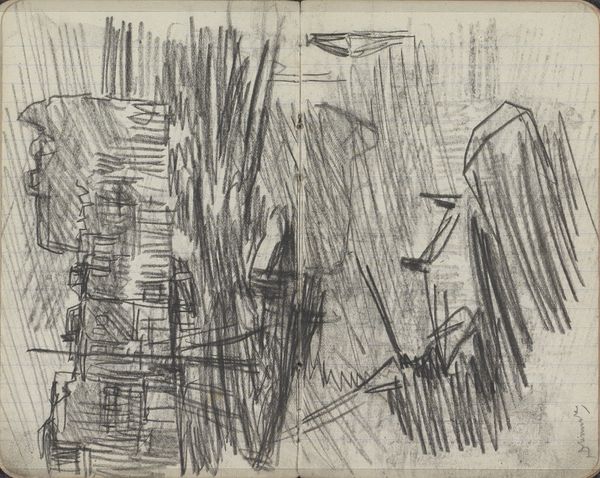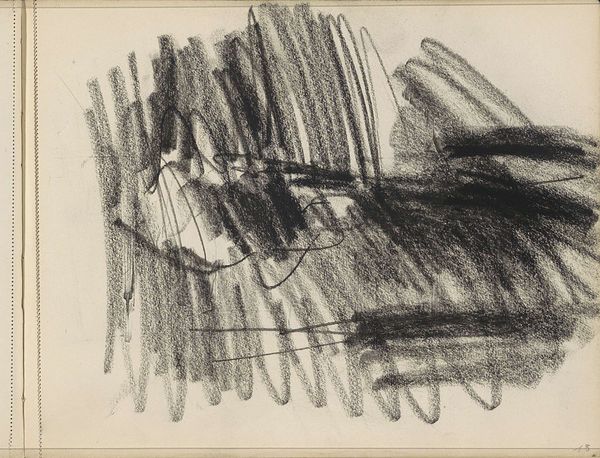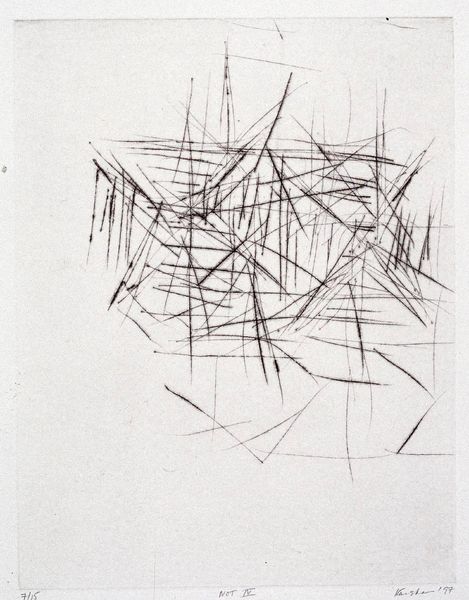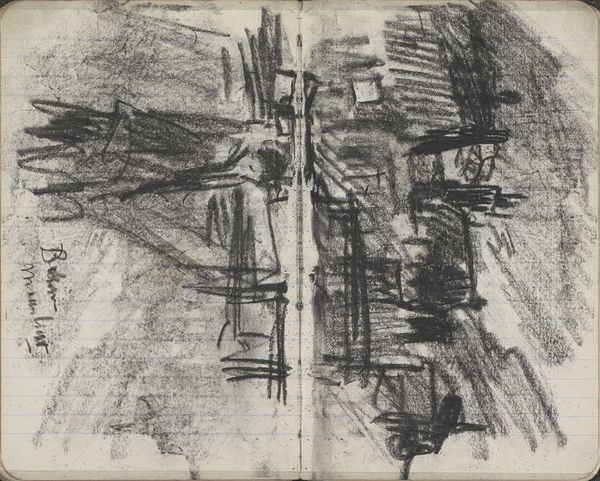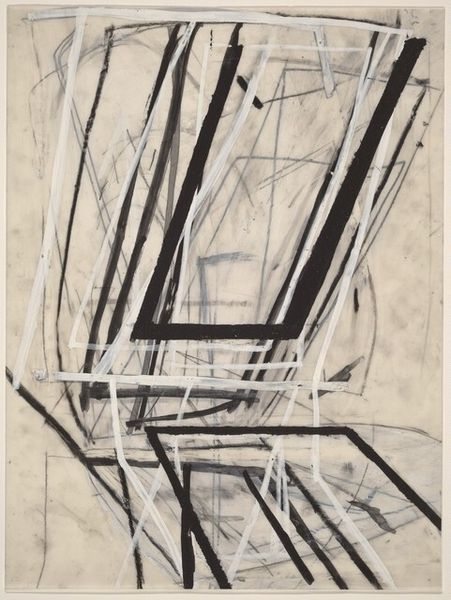
Copyright: Rijks Museum: Open Domain
Editor: This is George Hendrik Breitner's "View in Amsterdam with Moored Boats," a graphite and pencil drawing from around 1893 to 1898. It's a sketch, almost chaotic in its lines. What do you see in this piece? Curator: I see a fragmented Amsterdam, not the postcard version, but a working city. The sketchiness reveals a moment in time, a glimpse into the rapid industrial and social changes gripping Amsterdam. Do you think Breitner’s choice of such a raw medium contributes to this sense of urban flux? Editor: Absolutely! It feels immediate and unvarnished, far from the idealized landscapes of the time. It’s almost like he’s capturing the lived experience of the city, not just its appearance. Curator: Exactly. Consider the context. The late 19th century was a period of intense social stratification, visible in the urban landscape itself. Breitner, known for documenting working-class life, offers a contrasting viewpoint. The fragmented composition could even reflect the fragmented nature of social experience for marginalized communities. Do you see that at all? Editor: That makes a lot of sense. The way the boats are almost swallowed by the shadows suggests that kind of social invisibility. Curator: Precisely! Art isn’t just about aesthetics, it’s about engaging with the complex socio-political realities shaping our world. Even a seemingly simple sketch can carry profound meaning when we consider its historical and social context. Editor: It’s amazing how much can be revealed by looking beyond the surface. This really opens my eyes to approaching art with a more critical and contextual perspective. Curator: It’s a powerful tool for understanding the world around us, and how we participate within it.
Comments
No comments
Be the first to comment and join the conversation on the ultimate creative platform.
